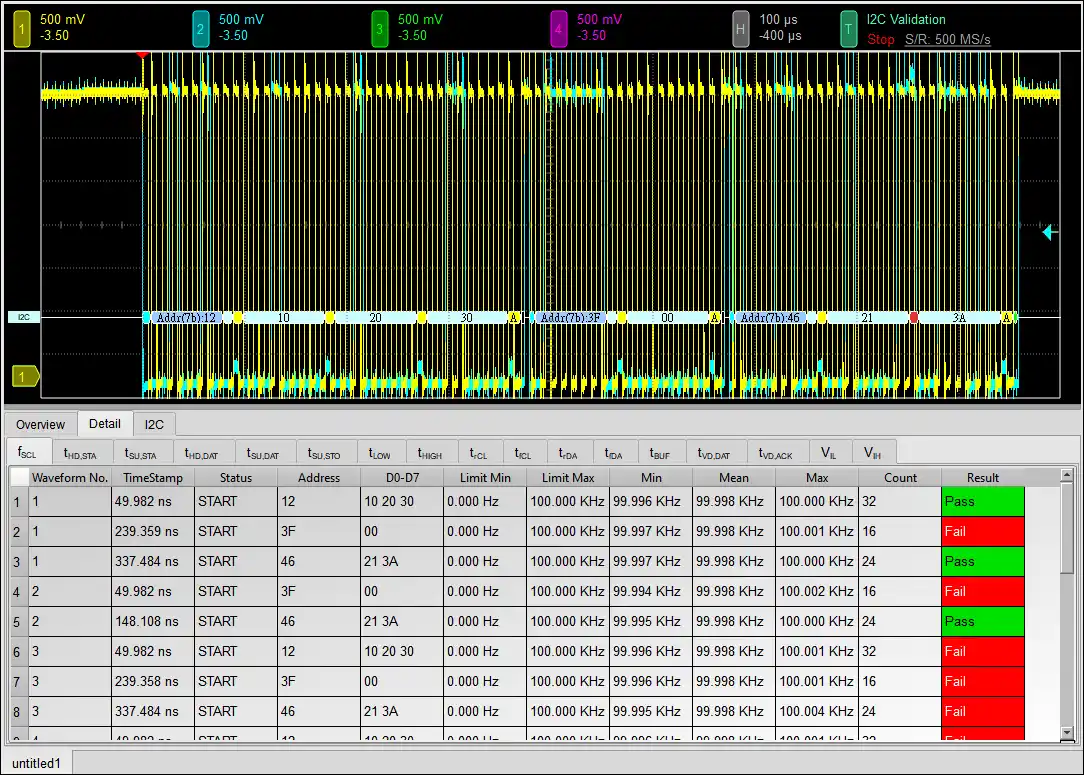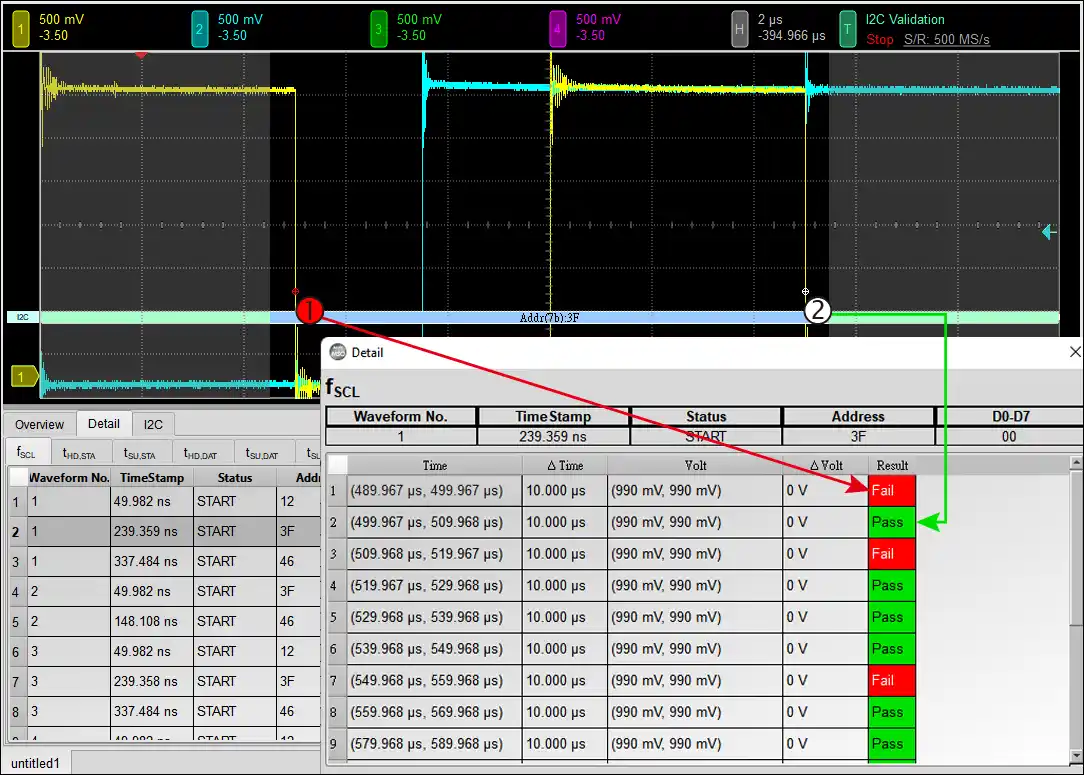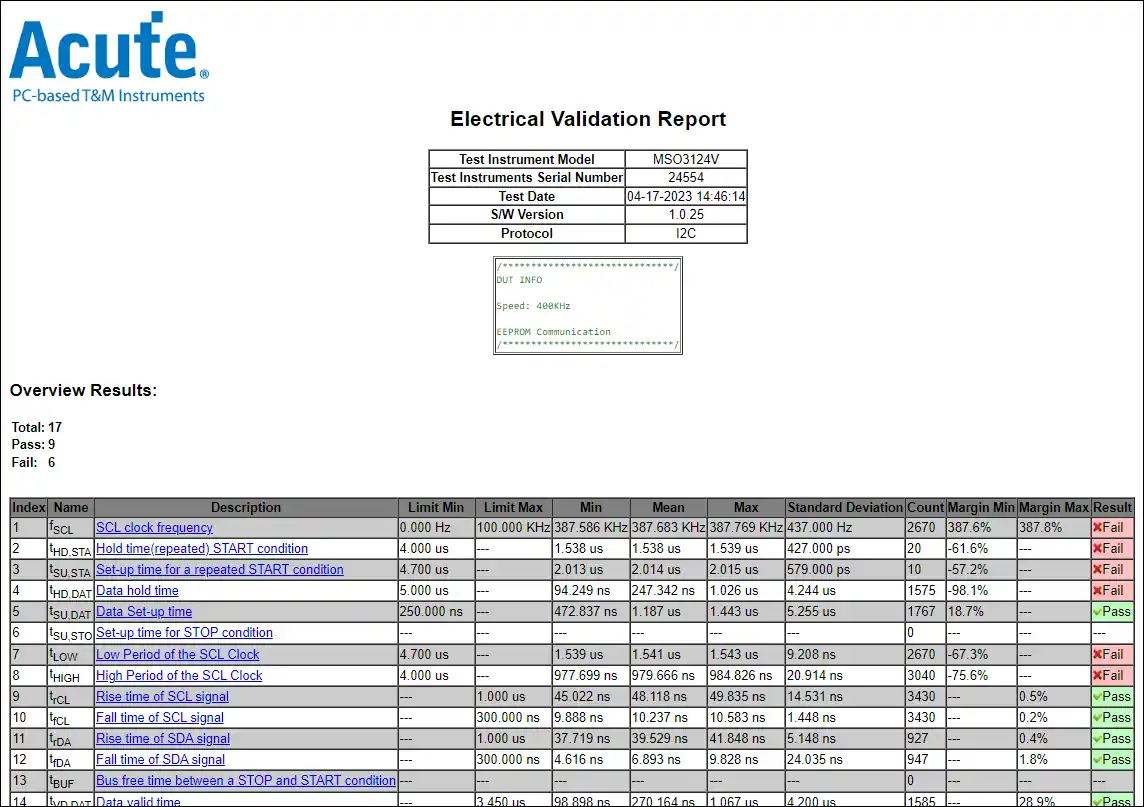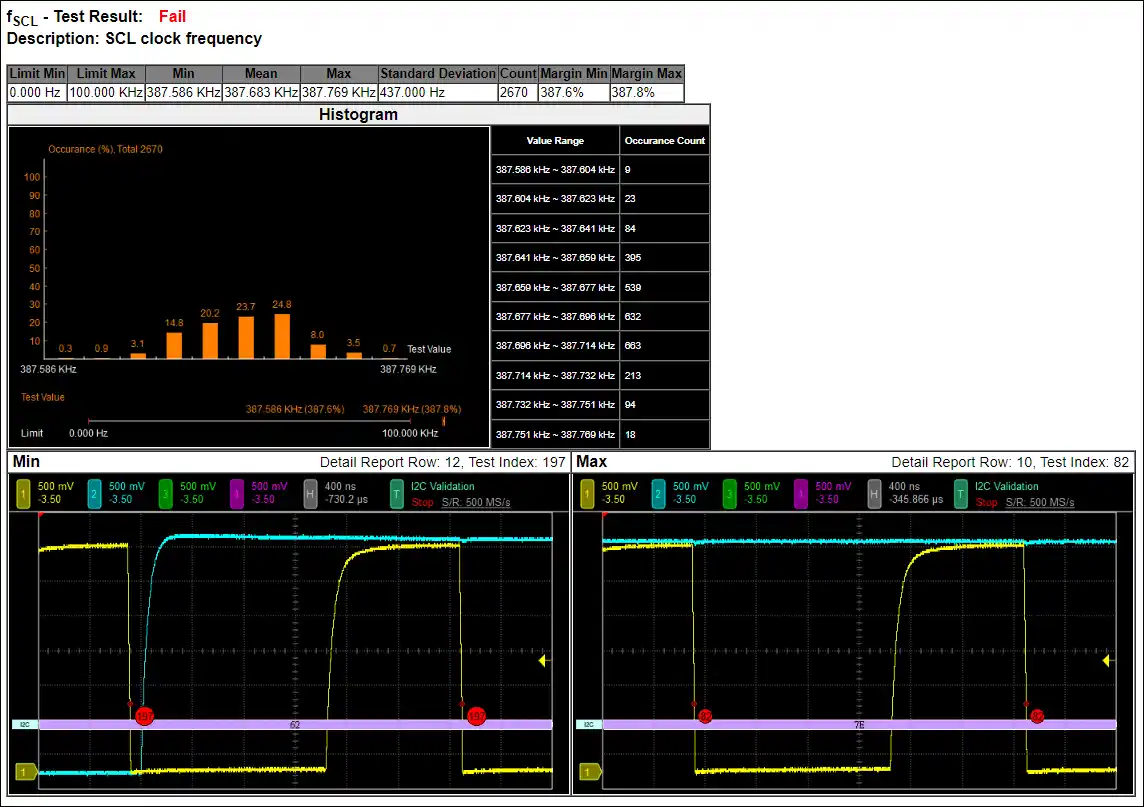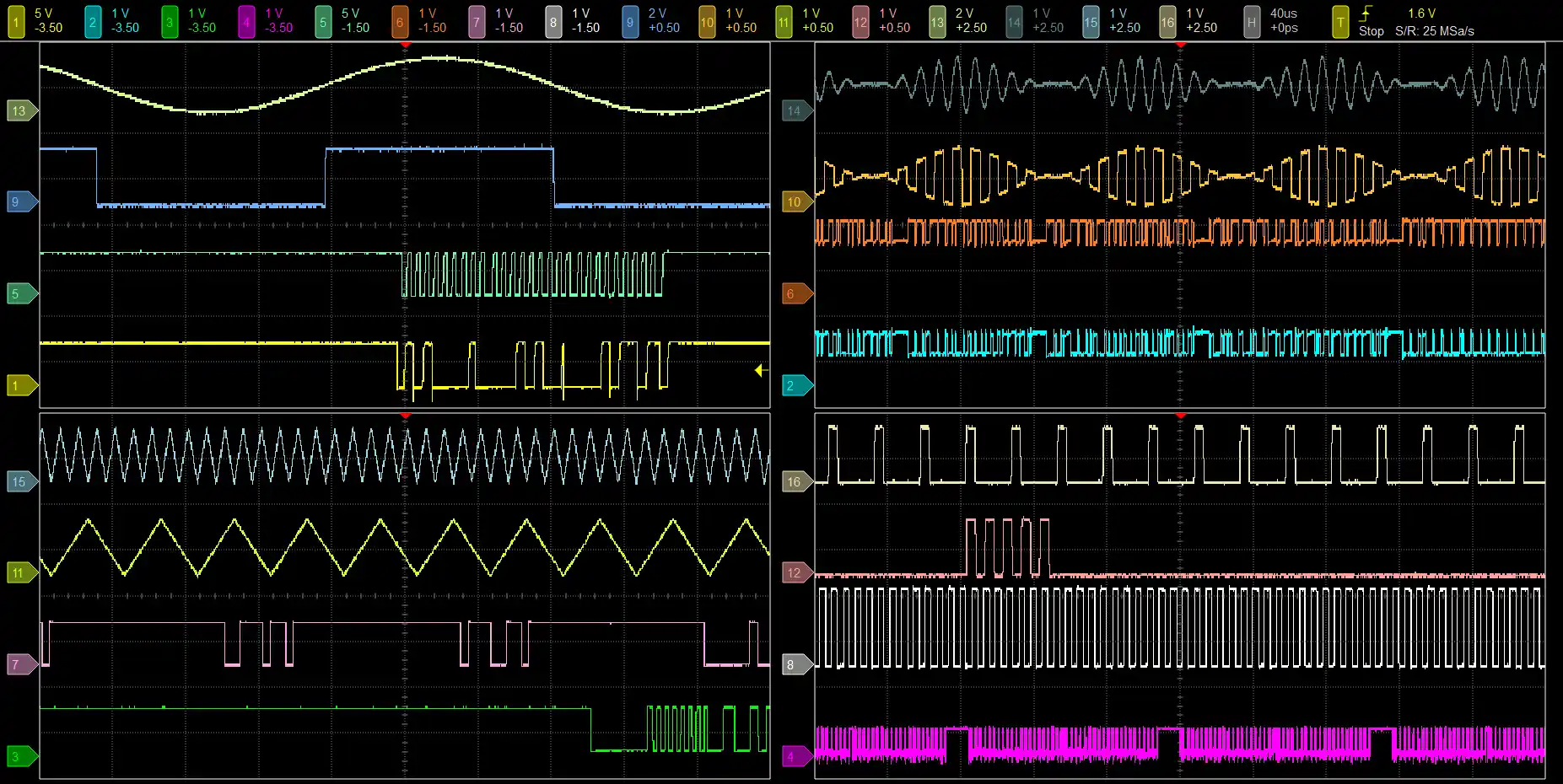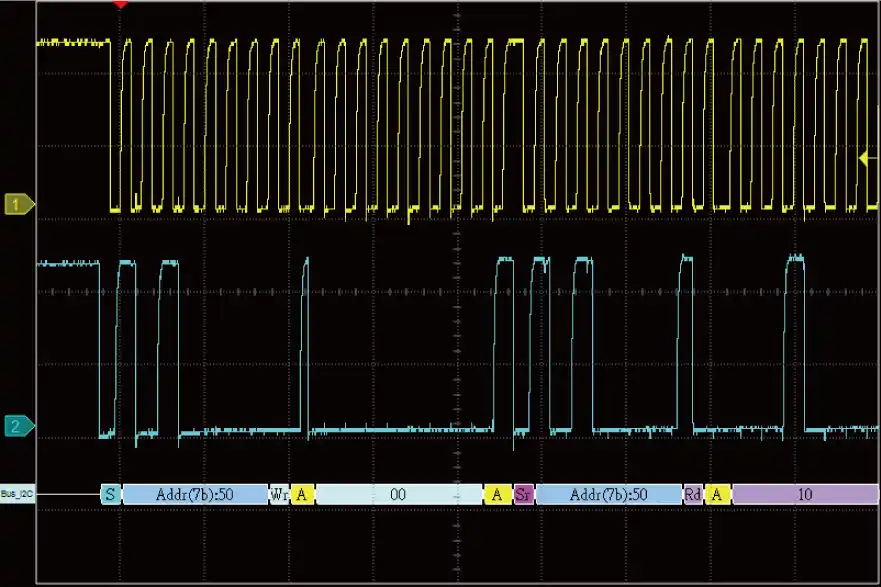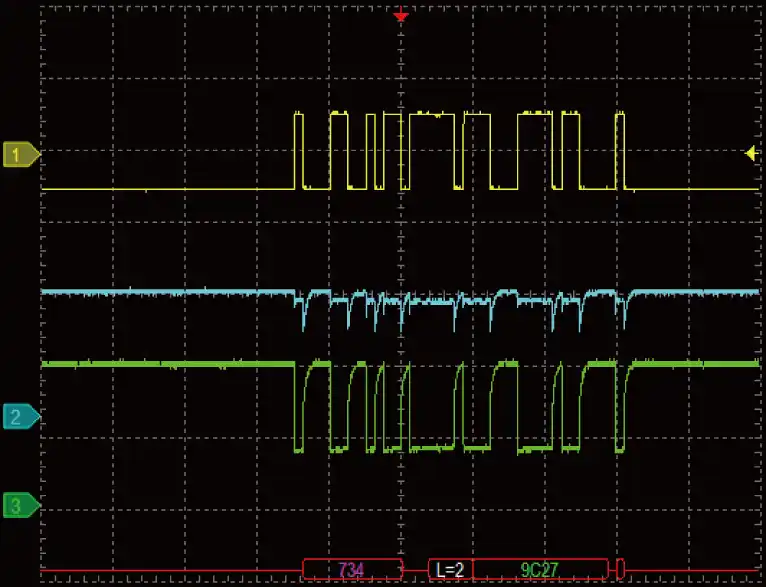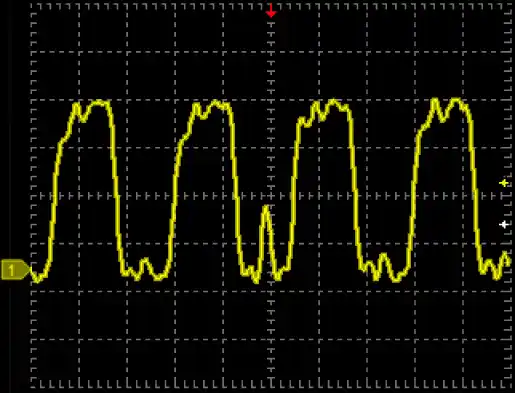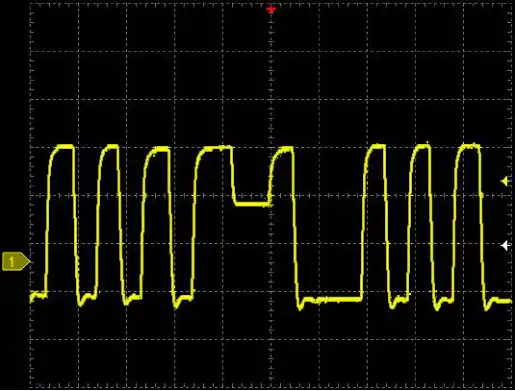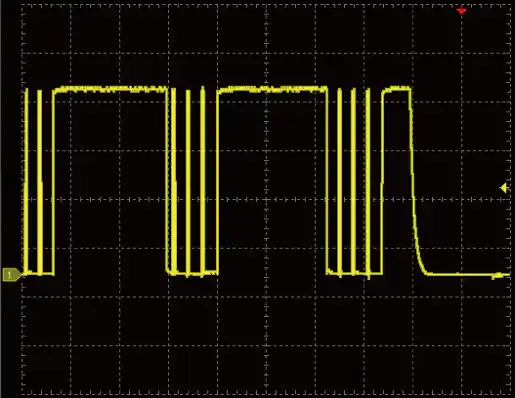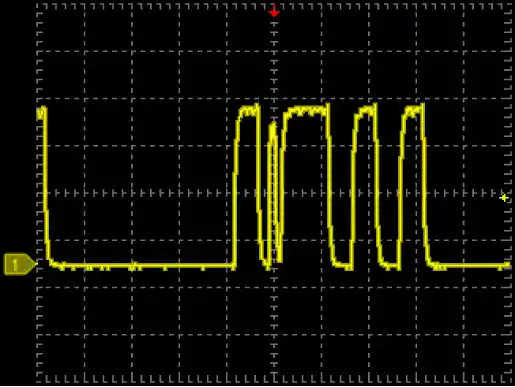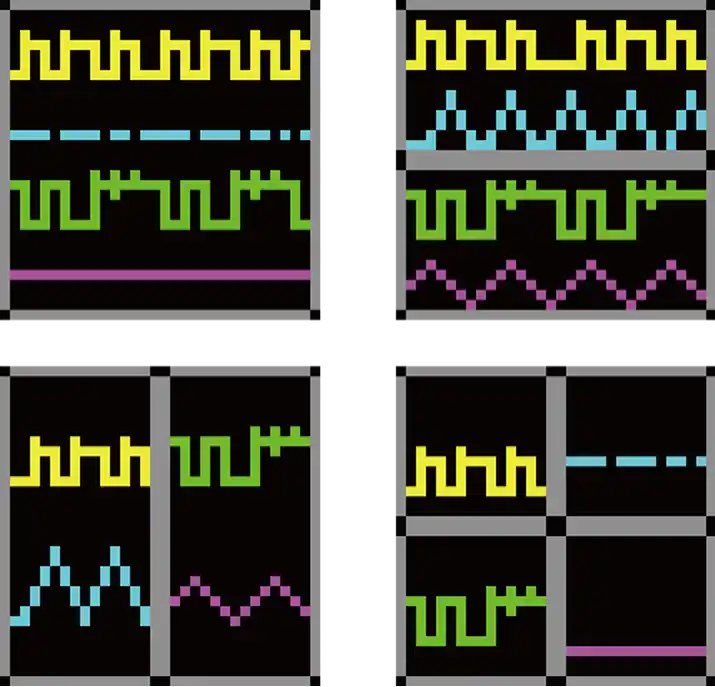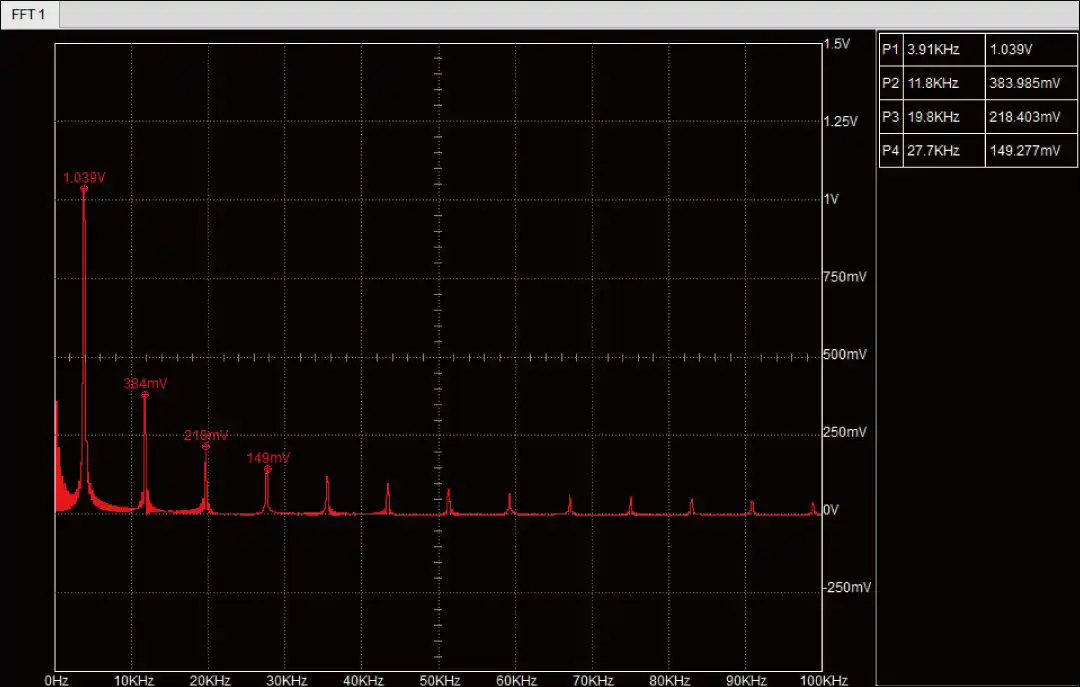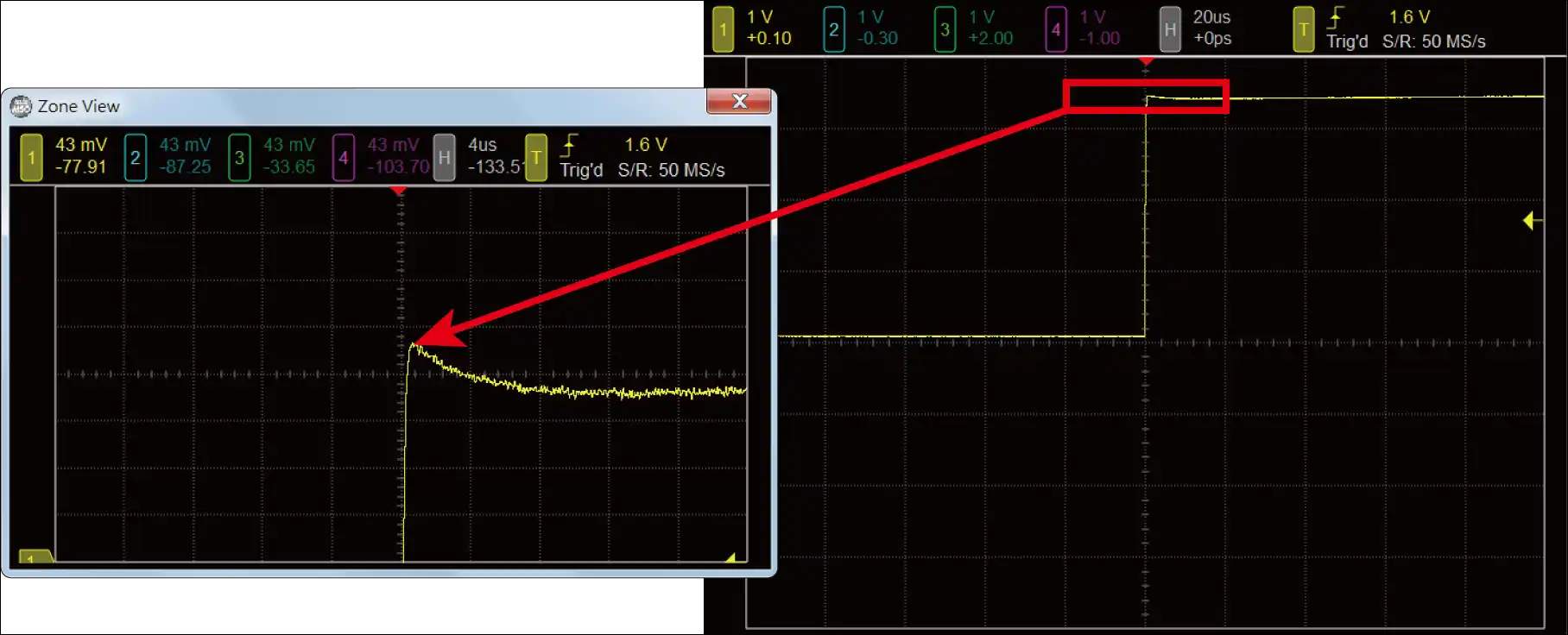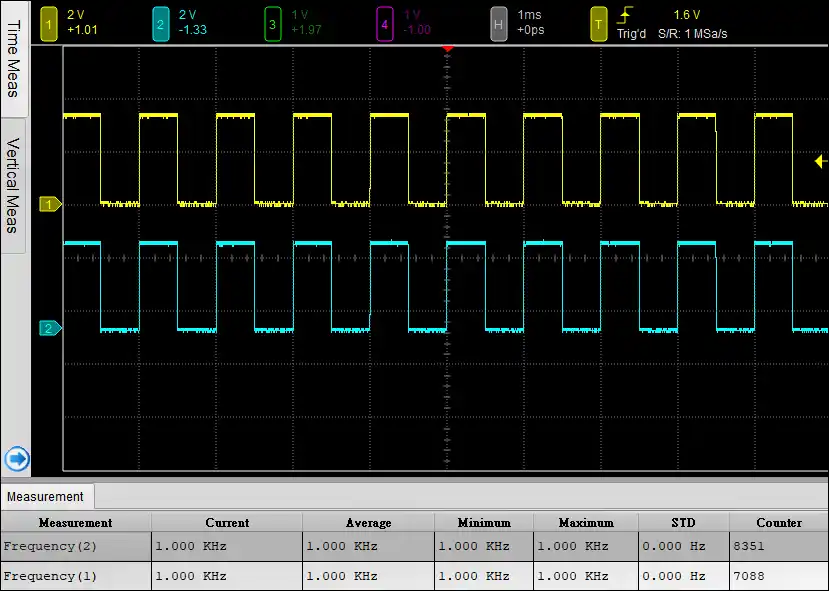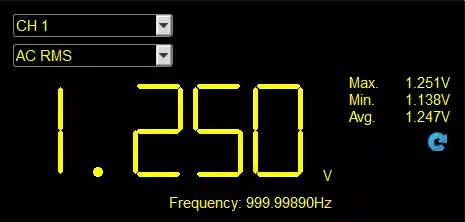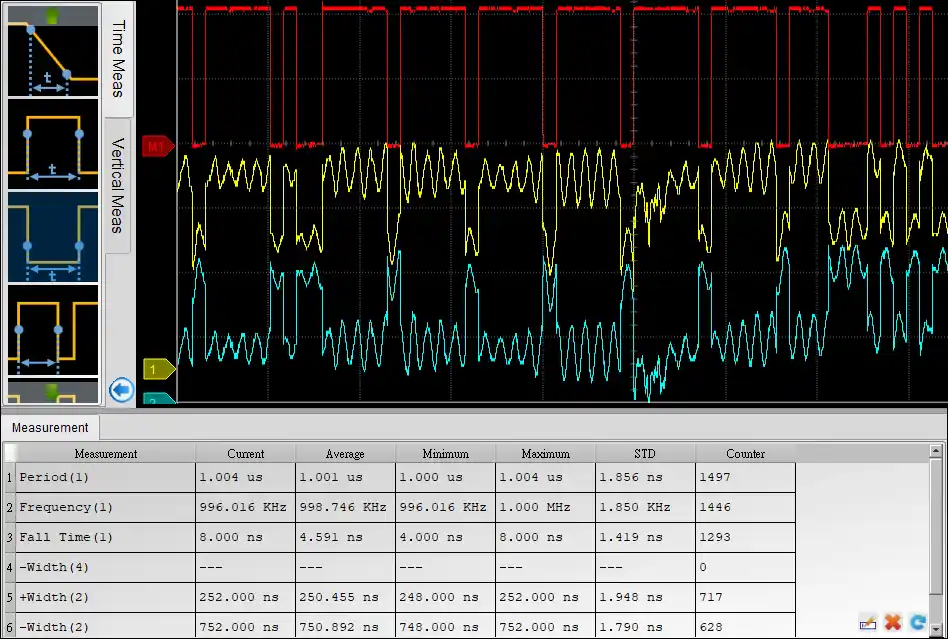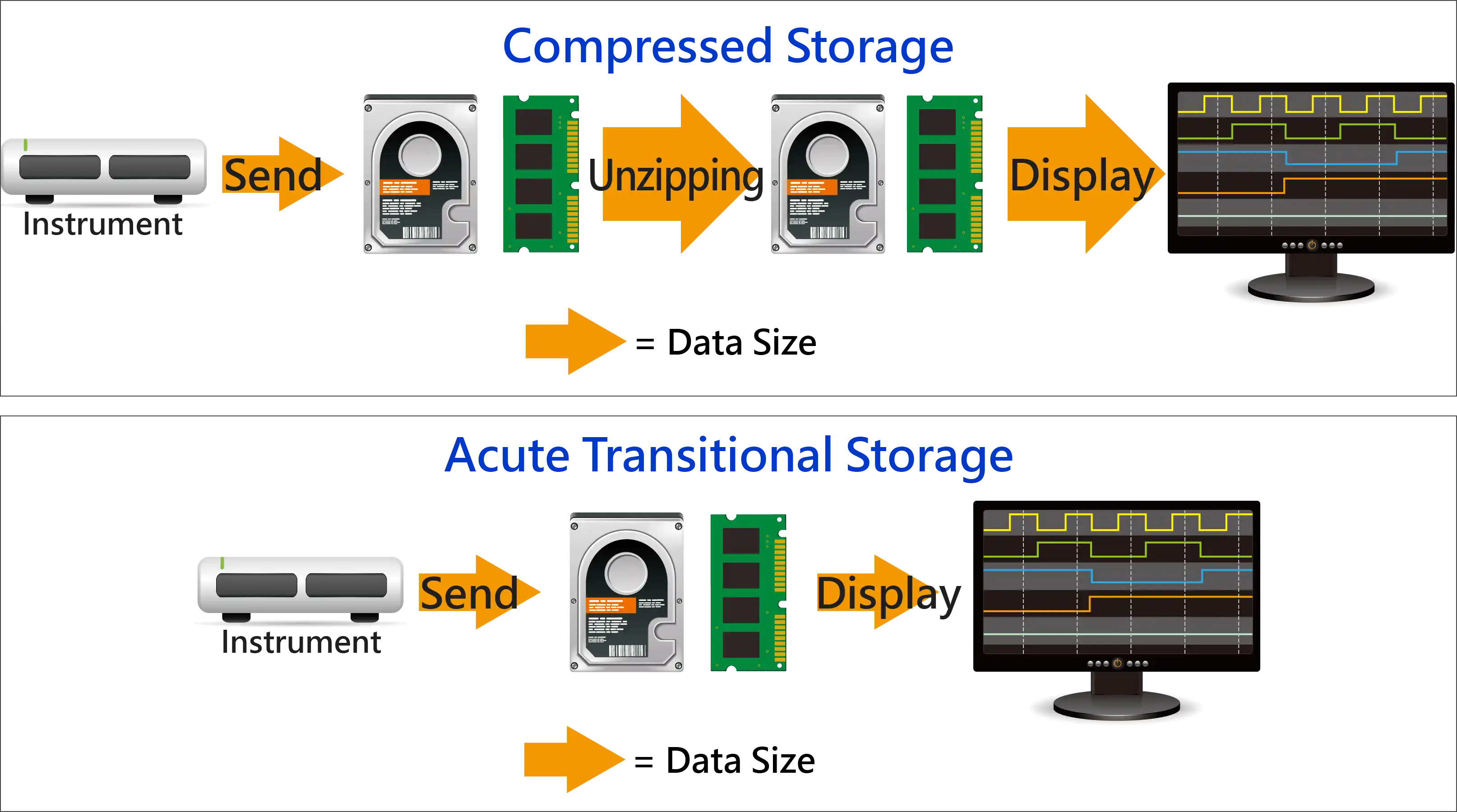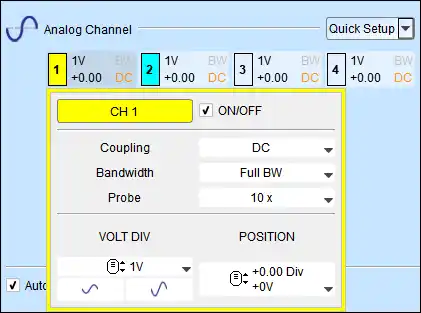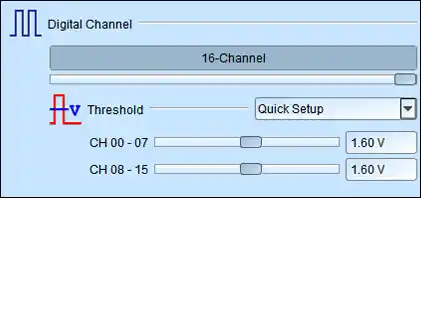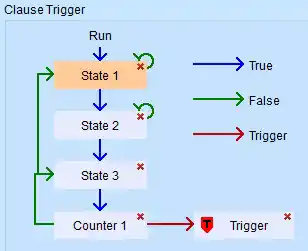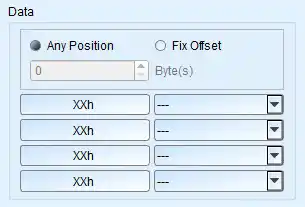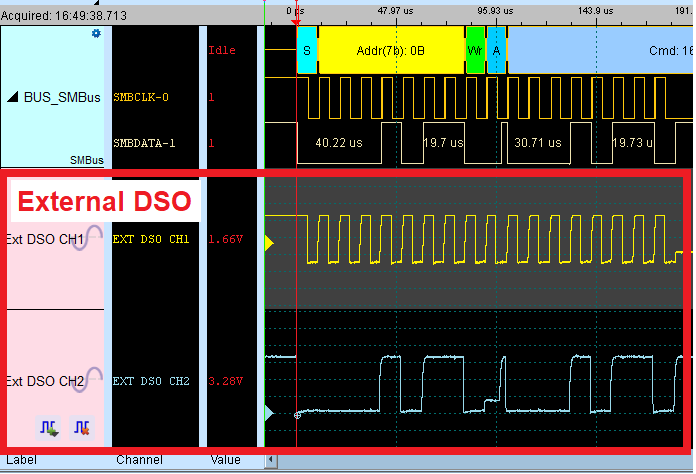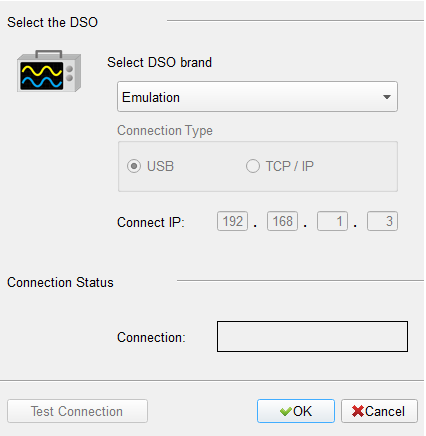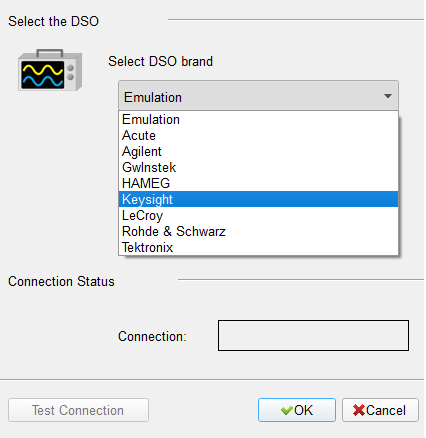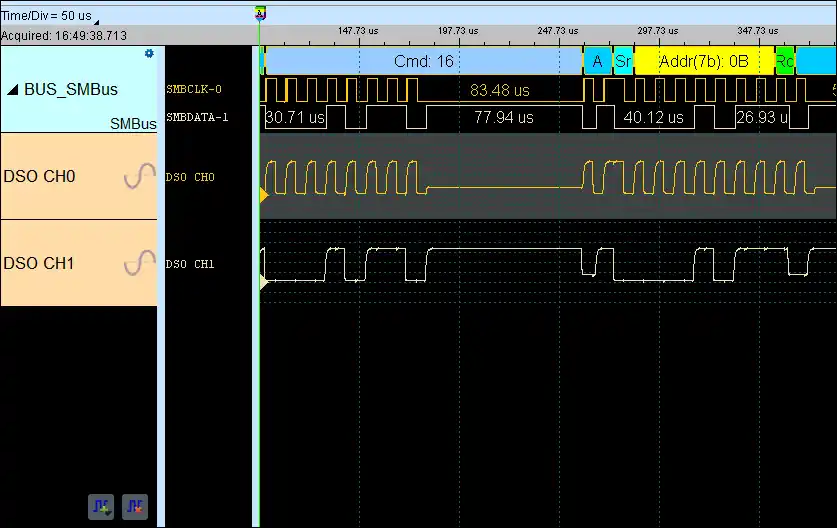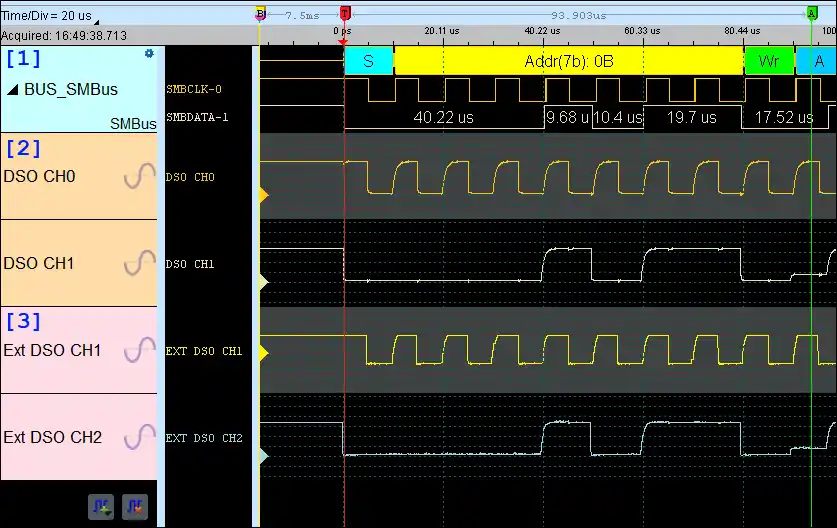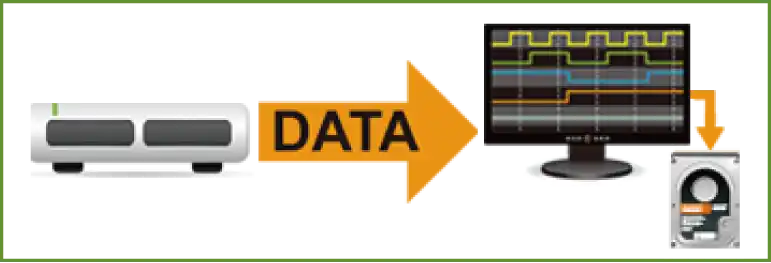DSO Spec.
Power source
USB bus-power (+5V)
Static power consumption
4.5W
Max power consumption
7.7W
Acquisition Mode
Sample, Average, Envelope[*], Peak detect[*], High resolution
8 bits Sampling [Record length]
1 Ch @ 1 GS/s [512 Mpts];2 Ch @ 500 MS/s [256 Mpts];4 Ch @ 250 MS/s [128 Mpts]
≧12 bits Sampling [Record length]
1 Ch @ 500 MS/s [512 Mpts];2 Ch @ 250 MS/s [256 Mpts];4 Ch @ 125 MS/s [64 Mpts]
≧14 bits Sampling [Record length]
1 Ch @ 100 MS/s [256 Mpts];2 Ch @ 100 MS/s [128 Mpts];4 Ch @ 100 MS/s [64 Mpts]
Input channels
4
Input coupling
AC/DC
Input impedance
1 MΩ ∥ <19 pF
Overvoltage protection
± 100 V (DC+AC peak)
Ch-Ch isolation
50dB @DC to 100MHz; 40dB @ 100MHz to 200MHz
Ch-Ch skew
100 ps between two channels with the same scale & coupling settings
Bandwidth
200 MHz
Rise time
1.75 ns @ 200 MHz; 3.5 ns @ 100 MHz; 7 ns @ 50 MHz
Resolution
8, 12, 14, 15, 16 bits
Input sensitivity
2 mV/div to 10 V/div
Offset range
±150 V @ 2, 5, 10 V/div;
±15 V @ 0.2, 0.5, 1 V/div;
±1.5 V @ 2, 5, 10, 20, 50, 100 mV/div
±15 V @ 0.2, 0.5, 1 V/div;
±1.5 V @ 2, 5, 10, 20, 50, 100 mV/div
DC accuracy
±3% of Full-Scale
Bandwidth limit
20 MHz, 100 MHz or Full
Protocol Trigger / Decode
BiSS-C, CAN 2.0B/CAN FD, DALI, DP_Aux, HID over I2C, I2C, I2S, LIN2.2, MDIO, Mini/Micro LED, MIPI I3C 1.1, MIPI RFFE 3, MIPI SPMI 2, Modbus, PMBus, ProfiBus, SENT, SMBus, SPI, SVI2, UART, USB PD 3, USB1.1
Electrical Validation (Protocol)
I2C, I2S, MIPI I3C, MIPI RFFE, MIPI SPMI, PDM, SPI, UART(RS232)
Cascade
16 Ch
LA Spec.
Power Source
N/A
Static Power Consumption
N/A
Max Power Consumption
N/A
Hardware Interface
N/A
Timing Analysis (Asynchronous,Max. Sample Rate)
2 GS/s
State Clock Rate (Synchronous,External Clock)
250MHz
Storage
Conventional Timing, Transitional Timing
Channels
16
Total Memory
N/A
Timing Analysis
Available Chs (Conventional / Transitional Timing) - Memory per Ch
4GHz Timing [Available Chs] - Memory per Ch
2GHz Timing [Available Chs] - Memory per Ch
[8/7]-512 Mpts
1GHz Timing [Available Chs] - Memory per Ch
[16/14]-256 Mpts
500MHz Timing [Available Chs] - Memory per Ch
[16/16]-256 Mpts
250MHz Timing [Available Chs] - Memory per Ch
[16/16]-256 Mpts
Channel to channel skew
< 1ns
Input impedance
75KΩ ∥ <2pF
Max. (Non-destructive)
±50V
Input operation
±30V
Input sensitivity
0.25Vpp @50MHz, 0.5Vpp @150MHz, 0.8Vpp @250MHz
Threshold group
2 (D0~D7, D8~D15 & CK0)
Threshold range
±30V
Threshold resolution
50mV
Threshold accuracy
±100mV + 5%*Vth
Trigger resolution
500ps
Trigger types
External, Manual, Multi Level, Setup/Hold Violation, Single Level, Timeout, Width
Protocol Trigger
BiSS-C, CAN2.0B/CAN FD, DALI, DP_Aux, eMMC 4.5, eSPI, HID over I2C, I2C, I2S, LIN2.2, LPC, MDIO, MII, Mini/Micro LED, MIPI I3C 1.1, MIPI RFFE 3, MIPI SPMI 2, Modbus, PMBus, Profibus, RGMII, RMII, SD 3.0 (SDIO 2.0), SENT, Serial Flash (SPI NAND), SMBus, SPI, SVI2, SVI3, SVID, UART, USB PD 3.1, USB1.1
Protocol Analyzer
BiSS-C, CAN2.0B/CAN FD, DALI, DP_Aux, eSPI, HID over I2C, I2C, I2S, LIN2.2, MDIO, MII, MIPI I3C 1.1, MIPI RFFE 3, Modbus, PMBus, Profibus, PWM, RGMII, RMII, SMBus, SPI, SVI3, SVID, UART, USB PD 3.1, USB1.1
